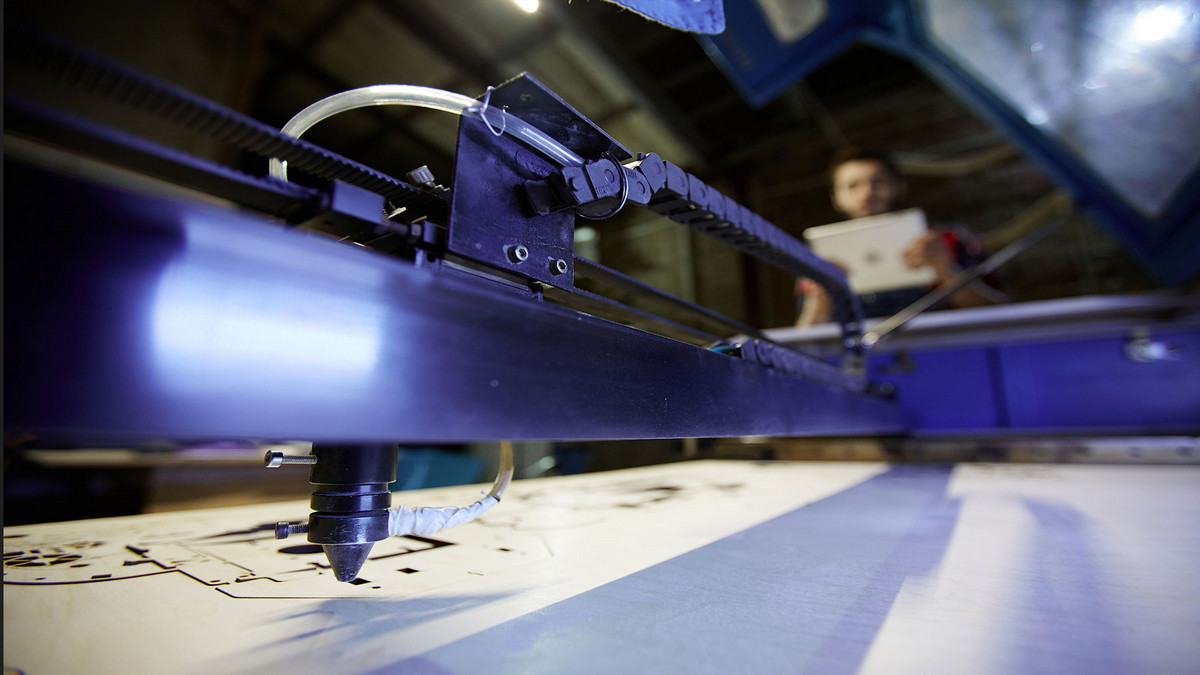There is more than one type of laser cutting. It can use different medias to generate lasers of different wavelengths, so the scope, characteristics and functions of the applications are different. In the following, the article will take you to understand the uses of laser cutting in different fields, so that you can better understand the laser cutting technology.
What is Laser Cutting?
The word LASER is Light Amplification by Stimulated Emission of Radiation, which is the abbreviation of "beam generated by stimulated radiation". Laser is an artificial light source with characteristics different from natural light, so practical technology has been widely developed and applied in various fields.
Simply put, Laser Cutting is a technology that uses a focused high-power laser light to melt and ablate objects to cut or engrave objects. Because the energy and density of the laser beam are quite high, and can produce fine gaps in the material, the so-called laser cutting machine is actually a way of heating and cutting.
To perform laser cutting in the field of material processing, the following three elements are required:
1. Laser light: high power after focusing, single light and strong, extremely high temperature, and extremely low divergence.
2. Substances: materials with low ignition point or melting point, such as paper, wood, metal, acrylic, leather, etc.
3. Resonance structure: it is a device that is convenient to operate the laser tube and let it interact with the material, such as the recommended plane laser cutting machine.
Since laser cutting machines have been sold on the market in the 1970s, laser cutting technology has been continuously improved and evolved rapidly. It is now a common application technology in various production, processing, and academic fields, such as metal cutting, sheet metal, printing, medical, manufacturing industries, etc.
What are the Uses of Laser Cutting Technology?
The use of laser cutting technology can not only meet the needs of industry and material processing, but also the meticulous beam characteristics, and even functions such as beauty and spot removal can be used freely.
1. Laser marking
Laser marking is to focus and irradiate the surface of the object with high density, and the high-density continuous laser beam will instantly melt the surface of the object, and at the same time control the laser path, so that the beam can form marks, incision lines on the surface of the object, and even make an engraving method of its discoloration. The characteristic of laser marking is that because it belongs to non-contact processing, the processed object will not be damaged or squeezed by external force, but it can achieve finer processing effect.
The laser marking machine can print logo, text, symbols and patterns on the surface of various objects (such as plastic, acrylic, metal, glass, ceramics, wood, leather) or hardware parts. Select the appropriate power to achieve the best laser effect. Generally speaking, the working area of laser marking is small, and the common working range is 15~20cm.
2. Laser cutting
The principle of laser cutting is: with a high output power, coupled with the focusing of optical lenses, a very fine laser beam is formed, and the surface of the object is heated and melted to achieve the purpose of fine processing. Judging from the recommended model of a laser cutting machine, the light spot at the front is like a knife, which can be accurately cut, hollowed out, or pressed with delicate graphic lines on the surface of the object, etc. At the same time, through the computer program setting, the laser can be moved. Shooting beams to complete the cutting and decoration of objects.
3. Laser welding
Laser welding is to focus on the two workpieces to be welded through high-power laser light, so that in the local area of the connection point, the temperature rises instantaneously, melts, and turns into a liquid before performing both. The joint between the two, and after it cools and solidifies, a laser welding project is completed. Laser welding can successfully complete the welding of metals and wire strings that are difficult to melt, and the surface is smooth, and there is almost no trace after processing.
4. Laser rust removal
Using the principle of laser cutting, it can also easily remove rust and deoxidation on the surface of the object. Compared with the traditional rust removal method, the laser rust removal cleaning machine can easily remove the rust layer on the metal and the oil on the surface of the object without the help of chemical agents or manual grinding methods, and even paint and coating.
5. Laser engraving
Laser engraving is likely to irradiate the focused high-density beam on the object to be processed, so that the local area of the object is instantly melted, leaving large and small fonts, patterns of different colors, and can also engrave shades on the surface of the object. The different heights and falls can achieve the effect of relief and shadow, so that the visual effect and touch of the product or promotional material have different sensory experience.
6. Laser beauty
Because of the characteristics of singleness, not easy to escape, and high focus, laser light can not only be used for industrial purposes of laser cutting, but also can be used on human skin to help remove spots, scars, hair, wrinkles, etc., to achieve the goal of skin care. Through the thermal decomposition of laser light, laser beauty procedures are carried out for local problems or symptoms of the skin.







.png)






